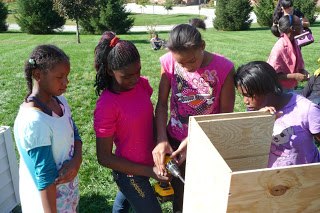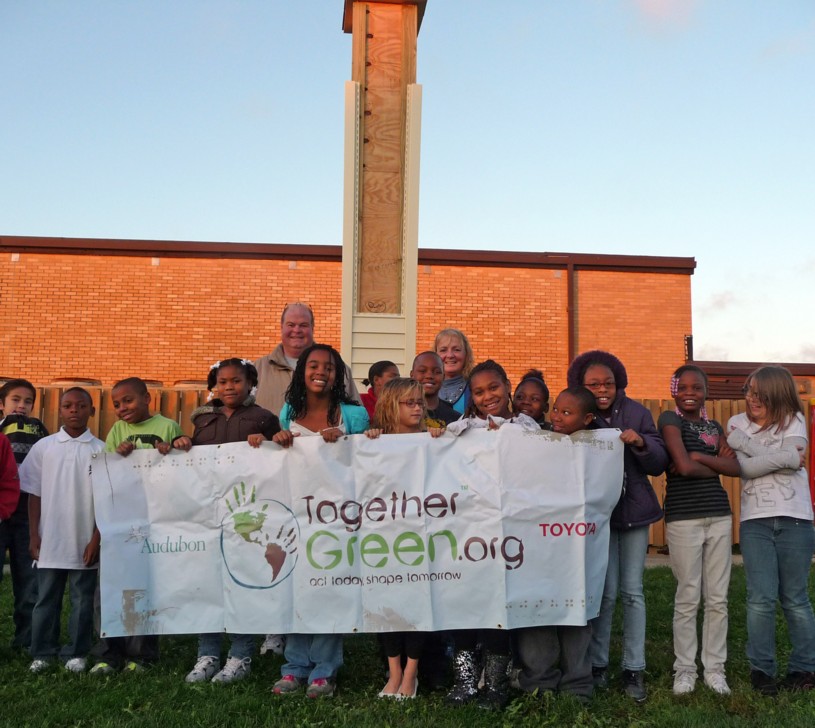It’s quite probable that “construction season” and Amos Butler Audubon Society (ABAS) have never been used in the same sentence. But, indeed, I am here to report that construction season has come to an end for ABAS. Construction, you ask? Yes, construction! During 2011, ABAS built nine Chimney Swift towers in Marion and Hamilton Counties. The Wings Over Indy project, which also included conservation work for Common Nighthawks, was funded by a grant from TogetherGreen, an alliance between Toyota and Audubon.
The towers will serve two purposes: (1) provide additional nesting locations for an urban bird species experiencing declining populations and (2) encourage others to take actions, such as keeping masonry chimneys uncapped or cleaning their chimney during October through April, when Chimney Swifts are not usually present. Another exciting aspect of Wings Over Indy is providing hands-on conservation experience to students in Marion County right at their own school. No need to take a bus to some distant park. They are making a difference at their neighborhood school. And, they are having fun using tools and learning about swifts in the process. That is way cool!
Thanks to Bill Ristow, who was working on his Eagle Scout designation, we were able to complete a total of nine towers rather than the seven originally planned. Bill did an outstanding job of organizing fellow scouts and parents to complete two towers at Wapahani Nature Preserve in Hamilton County. ABAS was pleased to fund Bill’s efforts through the Wings Over Indy initiative. The seven remaining towers, all in Marion County, are located at Eagle Creek Park (2), Smock Golf Course, Southeastway Park, Spades Park, Cold Spring School (IPS), and Brook Park Elementary (Lawrence Township).
Working with the students from the two schools was amazing. Both schools have a predominant minority student population that have been underexposed to environmental education. Usually, environmental education for these schools entails the students boarding a bus for a field trip to a distant (to them) park where they learn about nature. We are letting the students know that nature is all around them, even where they live and learn. Engaging the students to make a difference at their own school or neighborhood empowers them to be better environmental stewards in the future. This is a win for the Chimney Swifts; a win for the students; and a win for ABAS.
At this time, at least two more Chimney Swift towers are being planned to be built by early May 2012. The towers built in 2011 were not completed in time for the nesting season but we fully expect some of them to be occupied in 2012.
Don Gorney


